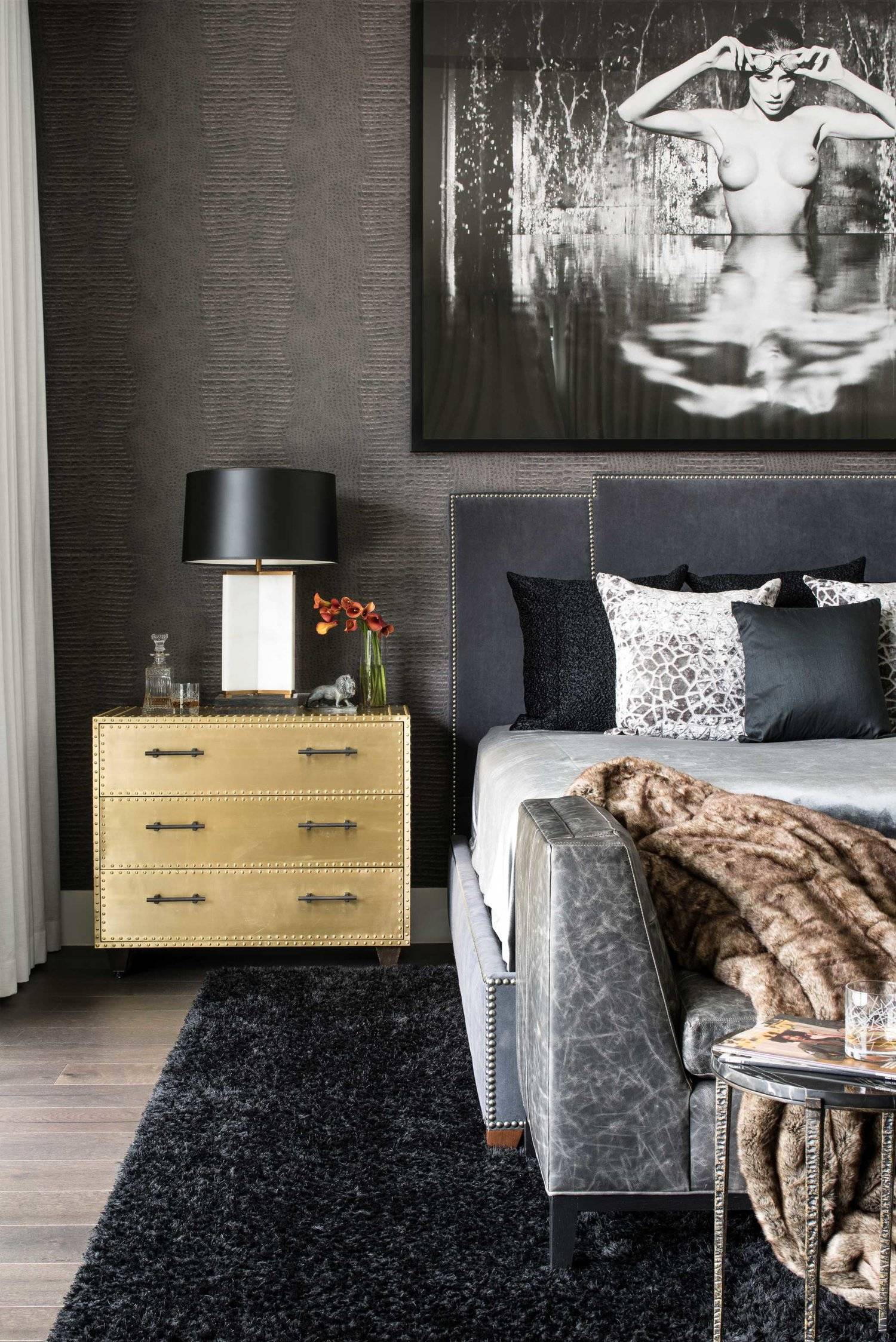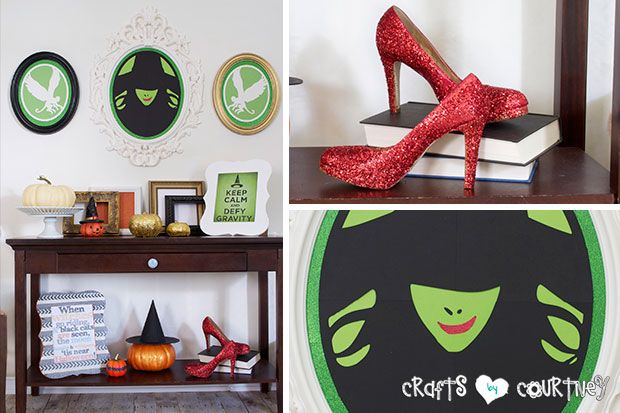Is Wicked Decorations considered avant-garde? If you’re curious about the intersection of art and decor, you’ve come to the right place. In this article, we’ll explore the concept of avant-garde and whether Wicked Decorations falls into this category. So, buckle up and get ready for an exciting journey into the world of unconventional and boundary-pushing design!
Avant-garde, a term derived from French, refers to innovative and experimental art that challenges traditional norms. It’s all about breaking free from the ordinary and pushing boundaries. But does Wicked Decorations fit the bill? Let’s delve deeper and find out if this unique form of decor can be considered avant-garde.
Imagine a world where decor takes on a wicked twist, where unconventional ideas come to life in vibrant colors and unexpected forms. Wicked Decorations dares to embrace the unusual, giving your space an avant-garde touch. Join us as we explore the realm of creativity and discover if Wicked Decorations truly embodies the spirit of avant-garde. Get ready to unleash your inner artist and let your imagination run wild!
Wicked Decorations is a brand known for its unique and innovative designs. While it may not be specifically categorized as avant-garde, it does incorporate elements of unconventional artistic expression. With their bold color palettes and daring designs, Wicked Decorations pushes the boundaries of traditional decor. Their pieces offer a fresh and exciting aesthetic that appeals to those looking to make a statement in their space. So, while not strictly avant-garde, Wicked Decorations certainly brings a touch of artistic flair to any room.

Is Wicked Decorations considered avant-garde?
Avant-garde, a French term meaning “vanguard,” refers to innovative and unconventional artistic expressions that push the boundaries of traditional norms. The concept of avant-garde has been applied to various art forms, such as painting, literature, music, and fashion. But what about decorations? Can decorative objects and designs be considered avant-garde? In this article, we delve into the world of wicked decorations and explore whether they can truly be classified as avant-garde.
Understanding Avant-Garde Decorations
Avant-garde decorations challenge the pre-established notions of what constitutes conventional decor. They aim to disrupt the status quo, provoke thought, and break free from the constraints of traditional design principles. Wicked decorations embrace unconventional shapes, materials, colors, and concepts. They embrace the unexpected, the bizarre, and the provocative in order to elicit strong emotional responses and challenge viewers’ perceptions.
Avant-garde decorations often blur the lines between art and functionality. Rather than simply serving a practical purpose, they become conversation pieces, stimulating intellectual and aesthetic discourse. These decorative objects defy categorization, often straddling multiple styles, and embracing a unique blend of elements to create something entirely new. While they may not appeal to everyone’s taste, they certainly make a bold statement and leave a lasting impression.
1) The Origins of Avant-Garde Decorations
Avant-garde decorations trace their roots back to the early 20th century, when art movements like Dada and Surrealism emerged. These movements rebelled against the traditional and embraced the irrational, nonsensical, and absurd. Artists such as Salvador Dali and Marcel Duchamp created provocative artworks that challenged societal norms and conventions. Their influence paved the way for avant-garde designers and decorators to experiment with unconventional ideas.
In the world of decor, avant-garde designers sought to bridge the gap between art and everyday objects. Marcel Wanders, a prominent figure in avant-garde design, is known for transforming furniture into sculptural works of art. His iconic Knotted Chair defied the expectations of what a chair should look like, with its tangled rope construction. This merging of functionality and artistic expression laid the foundation for wicked decorations to emerge.
Wicked decorations have evolved over time, influenced by postmodernism, pop art, and other artistic movements. Artists like Jeff Koons and Yayoi Kusama have embraced the avant-garde spirit in their installations and sculptures. Their works challenge the viewer’s perception of reality, inviting them into a world of whimsy, playfulness, and introspection. Avant-garde decorations continue to push the boundaries and provoke new ways of thinking about design and decor.
2) The Impact of Avant-Garde Decorations
Avant-garde decorations have a profound impact on the world of design and decor. They serve as a catalyst for innovation and inspire other creatives to think outside the box. By challenging conventions and embracing the unconventional, wicked decorations push the boundaries of what is considered acceptable in design.
One of the benefits of avant-garde decorations is their ability to spark conversations and dialogue. These pieces often invite viewers to question the norms and assumptions they hold about design, beauty, and functionality. They challenge the viewer to expand their horizons and consider new possibilities.
Avant-garde decorations also allow individuals to express their unique personality and individuality. By incorporating these unconventional pieces into their spaces, individuals can make a statement about their personal tastes and values. Wicked decorations become a form of self-expression that goes beyond mere aesthetics.
In terms of the broader design industry, avant-garde decorations serve as a source of inspiration for designers and decorators. They provide new ideas, techniques, and materials that can be incorporated into more mainstream design practices. By pushing boundaries and defying conventions, avant-garde decorations pave the way for future innovations in the field.
In conclusion, whilst wicked decorations can certainly be considered avant-garde, their classification as such ultimately depends on the individual’s interpretation and perspective. These unconventional decorations challenge traditional notions of design, embrace the unexpected, and provoke thought and conversation. Whether you love them or find them perplexing, there’s no denying the impact avant-garde decorations have on the world of design and decor. So, embrace the wicked and let your space reflect your unique personality and appreciation for the unconventional.
Is Wicked Decorations considered avant-garde?
Avant-garde refers to innovative and experimental forms of art and design.
While Wicked Decorations might have elements of unconventional and unique design, it does not strictly fall under the avant-garde category.
Avant-garde often pushes boundaries and challenges traditional norms, whereas Wicked Decorations tends to incorporate more popular and trendy styles.
However, Wicked Decorations can still be seen as artistic and creative, offering a fresh and modern take on home decor.
Ultimately, whether something is considered avant-garde depends on the perspective and interpretation of individuals.
Frequently Asked Questions
Are you curious about whether Wicked Decorations can be considered avant-garde? Below are answers to some of the most frequently asked questions on this topic.
What does it mean for something to be considered avant-garde?
When something is considered avant-garde, it means that it is innovative, experimental, and pushes the boundaries of traditional artistic conventions. Avant-garde art often challenges societal norms and pushes for new artistic expressions. It is often associated with being ahead of its time and can be seen as controversial or unconventional. Avant-garde art can take many forms, including visual art, music, literature, and even fashion.
While the term “avant-garde” is subjective and can vary across different artistic disciplines and time periods, it typically refers to work that breaks away from the norm and explores new territories. It encourages viewers to question existing conventions and consider new perspectives.
Does Wicked Decorations fit the criteria for avant-garde art?
Whether Wicked Decorations can be considered avant-garde depends on several factors. Avant-garde art is often characterized by its innovation, experimentation, and ability to challenge traditional norms. If Wicked Decorations incorporates these qualities and pushes boundaries in terms of artistic expression or design, it could potentially be considered avant-garde.
However, it’s important to note that perception plays a significant role in determining whether something is considered avant-garde. Different individuals may have different interpretations of what is considered innovative or groundbreaking. Additionally, the context in which Wicked Decorations is presented and the artistic movements or trends it aligns with can also influence its classification as avant-garde.
What artistic elements make Wicked Decorations unique?
Wicked Decorations stands out for its unique combination of various artistic elements. It incorporates bold and unconventional color choices, intricate and unconventional shapes or forms, and often features unexpected materials or textures. These elements help create a distinctive aesthetic that sets Wicked Decorations apart from more traditional or mainstream forms of decoration.
Furthermore, Wicked Decorations often challenges conventional notions of functionality and purpose. It blurs the lines between art and design, pushing the boundaries of what is typically considered acceptable or expected in the realm of decoration. By merging artistic expression with functional objects, Wicked Decorations creates a unique and thought-provoking visual experience.
What impact does Wicked Decorations have on the viewer?
Wicked Decorations can have a powerful impact on the viewer. Its unconventional and avant-garde qualities often evoke strong emotions, challenge preconceived notions, and invite deep contemplation. By pushing the boundaries of traditional decoration, Wicked Decorations prompts viewers to question existing norms and explore new perspectives.
Furthermore, the bold and unique aesthetic of Wicked Decorations can captivate and inspire viewers, leaving a lasting impression. It encourages individuals to engage with art in a new way, fostering conversation and dialogue about the role of art and design in society. Wicked Decorations has the potential to spark creative thinking and push viewers to challenge their own artistic sensibilities.
Is Wicked Decorations mainstream or niche?
Wicked Decorations can be considered more niche than mainstream due to its avant-garde nature. While it may have a dedicated following and a significant impact within specific artistic circles or communities, its unconventional qualities and departure from traditional decoration styles can limit its appeal to a broader audience. However, this can also be seen as a strength, as it allows Wicked Decorations to maintain its distinct identity and appeal to individuals seeking unique and unconventional artistic experiences.
It’s important to note that the mainstream or niche classification of Wicked Decorations can vary depending on the context. It is possible for Wicked Decorations to gain mainstream popularity and recognition if it manages to bridge the gap between avant-garde art and wider consumer appeal. However, regardless of its mainstream or niche status, the significance and impact of Wicked Decorations lie in its ability to challenge artistic conventions and push boundaries.

MICHAEL’S Halloween: Wicked Garden Decor 2023
Summary
Wicked decorations are not considered avant-garde because they are too commonplace and predictable. Avant-garde art is meant to challenge traditional ideas and push boundaries, but wicked decorations are just a trendy and predictable form of expression. Avant-garde art is often controversial and thought-provoking, while wicked decorations are simply meant to be eye-catching and entertaining. So, while wicked decorations may be fun and trendy, they do not meet the criteria for being avant-garde.

